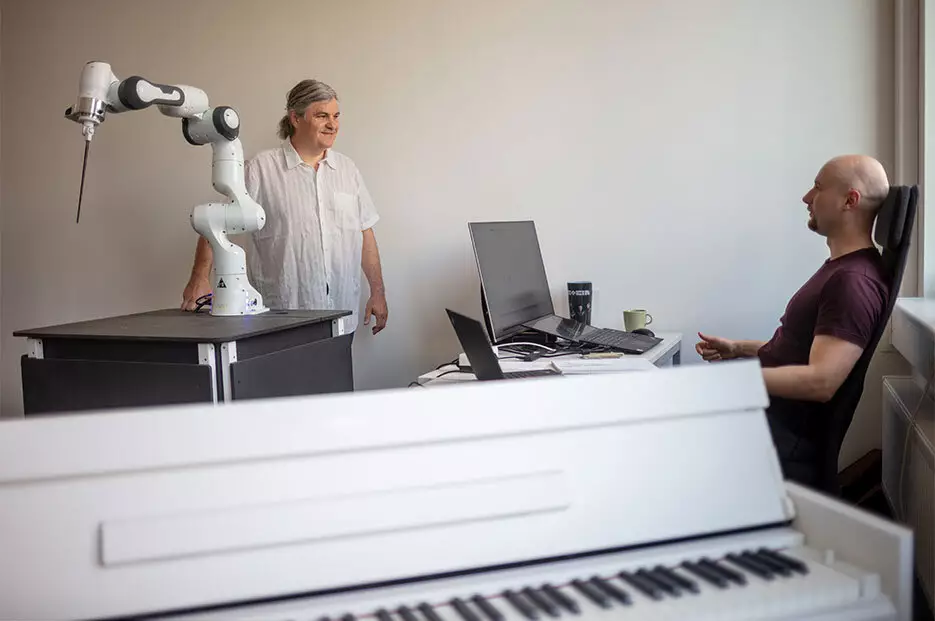In an unprecedented move, the city of Dresden has welcomed a groundbreaking three-armed robot designed to replicate the role of a human orchestra conductor. This innovative device made its debut recently, leading live performances alongside the esteemed Dresdner Sinfoniker orchestra. The robot isn’t just a mechanical contraption; it has been specifically trained to direct musicians through complex compositions, showcasing its ability to enhance the orchestral experience rather than merely replace human talent.
Sporting three arm-like appendages reminiscent of light sabers from the “Star Wars” franchise, the robot possesses an extraordinary capacity for independent movement. This design allows it to effectively manage multiple sections of the orchestra simultaneously, a feat that would challenge even the most skilled human conductor. The performances featured pieces composed specifically to highlight the robot’s unique conducting capabilities, illustrating the idea that technology can be integrated into art without overshadowing its human influences.
At the heart of this project lies the collaboration between renowned composer Andreas Gundlach and scientists from Dresden’s Technical University. Gundlach’s vision for the robot was not just to create a simple machine but to explore the synergy between humans and collaborative robots, or “cobots.” This partnership emphasizes that the goal of such technology is not to replace human creativity but to augment it. The development process of the robot was extensive and meticulous, spanning two years of training to ensure it could convey the rhythmic and dynamic nuances of conducting to the musicians.
Gundlach faced considerable challenges in teaching the robot the subtle art of conducting. He acknowledges that the process of instilling aesthetic movement in the robot revealed deep insights about human creativity. The intricate gestures required for effective conducting, particularly those that signal emotional dynamics within the music, proved complex to program. Achieving the right blend of precision and expressiveness demanded patient and innovative thinking, emphasizing that the art of conducting is as much about conveying emotion as it is about maintaining time.
The robot’s performances included pieces such as “Semiconductor’s Masterpiece” and “#kreuzknoten,” showcasing its capability to handle music with varying tempos and textures delightfully. The response from both musicians and audiences alike was overwhelmingly positive. This event marks a significant step in the fusion of technology and art, prompting further questions about the role of robotics in performance art. As we shift into an era where machines and humans can collaborate creatively, the future of orchestral music holds exciting possibilities that challenge traditional boundaries.
The introduction of a robot conductor raises profound questions about creativity, collaboration, and the evolving relationship between technology and the arts. As we explore these developments, we find ourselves at the cusp of a new horizon in musical expression, where humans and machines can coexist, each bringing unique strengths to the creative process.


Leave a Reply